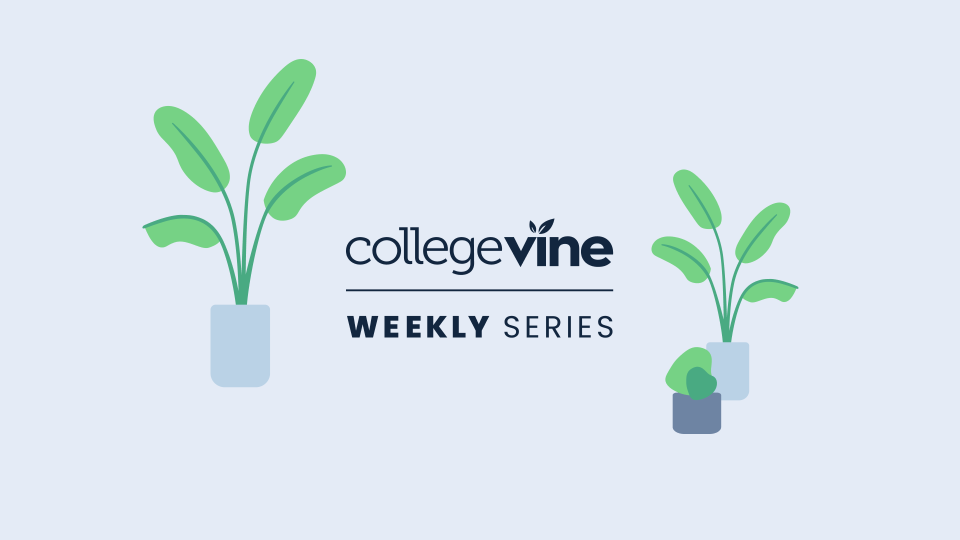Weekly Webinar: The Student User Experience and Direct Admissions
[VIDEO] In the June 8th episode, Emily Smith, Vice President of Partner Success at CollegeVine, shared a step-by-step walk-thru of how students use...
3 min read
Celine Charitat : October 31, 2023

In my time in the K-12 space, I witnessed a profound evolution, one largely spurred by the demands of the COVID-19 pandemic. All schools (colleges and universities included) were forced to reimagine traditional structures, adopting online lectures, running after-school Zoom activities, and employing a number of innovative ed tech tools designed to improve student engagement.
The shift was nothing short of a mini-renaissance in educational practices and approaches. Today, as I dive deeper into the admissions space in higher education, it's evident that the industry stands on the brink of a similar transformative moment.
Just in the last six months, I’ve witnessed a number of new challenges that are quickly giving way to a new and difficult reality for admissions teams.
The processes and patterns that define admissions and enrollment are changing seemingly daily as the industry faces new challenges. New rules and regulations around enrollment, notably the overturning of Affirmative Action policies, the widespread departure of seasoned admissions officers, and the increasing challenges of reaching potential college students because of the demographic and Search Cliffs, collectively intensify the pressures that admissions teams are currently feeling.
Institutions can no longer rely on old rituals: bulk name buys and spray and pray methods for recruitment.
We should see these changes as both challenges and as an opportunity.
Right now, admissions teams are uniquely poised to turn the tides on what’s happening. By embracing the myriad of technologies that are available today, not only can admissions officers, directors, and VPs make their jobs easier, but they may also be more successful than ever.
From my perspective, this is the obvious, and only, solution.
Today, admissions officers are leaving the profession in droves. As the linchpins of the enrollment ecosystem, this could spell disaster for colleges across the country.
But why are they leaving? From burnout and feelings of under appreciation to the allure of better opportunities elsewhere, admissions officers across the country are struggling to find reasons to stay.
As the workforce begins to dwindle, so too does the availability of prospective college-bound students.
Besides the workforce, another population important to the space is undergoing significant transformation. The students.
For most smaller institutions, once tried and true recruitment strategies are coming up short year after year, and it’s only going to get worse. I’m sure by know you all know about the demographic cliff, but there’s a new threat looming: the student Search Cliff.
As The College Board shifts to digitized versions of their SAT and PSAT, state privacy laws will prevent colleges from being able to access the volume of names they have been able to purchase in the past. We anticipate that over time this will lead to colleges being able to access up to 40% fewer names than they do now. By Fall 2027, the effects of the Search Cliff will be in full force.
Along with the talent exodus, these changes require institutions to be more innovative, adaptable, and forward-thinking in the way they approach admissions and recruitment.
Given today's admissions challenges, the importance of time-saving tools and technologies for admissions teams cannot be understated. Now more than ever is the time to utilize new and upcoming tools and technology to streamline work processes and help your team do their jobs better.
Outdated approaches no longer yield the same results.
One of the significant shifts in admissions operations I’ve noticed is the move towards integrated platforms for recruiting and enrollment. These solutions effectively combine various admissions processes into a unified experience.
By centralizing tasks related to demographic research, student discovery, relationship building, and even offers of admission and scholarship, these tools are being used today to reduce manual efforts and improve efficiency across admissions offices. This means that even with fewer admissions officers, the same amount of work can be accomplished. To me, use of these technologies seems like a no-brainer.
I'm beginning to appreciate how these platforms will genuinely reshape the higher education landscape.
In my experience so far, it seems like personalization and genuine connection provide the gold standard for efficiency in recruitment and admissions. By taking on a more relationship-driven approach, admissions teams can be more efficient in their outreach to students, both at scale and individually. It’s obvious: the more a student feels connected to your team and your institution, the more likely they are to apply.
CollegeVine can help your team do this at scale. Tools like the CollegeVine campaign builder allow institutions to easily build meaningful connections with best-fit students.
A transformation in student communications, too will be important in the new age. AI writers, like ChatGPT or our Email Content Optimizer, can be used to refine content, ensuring your team is creating content that resonates with prospective students.
I'm quickly realizing, and I hope you recognize as well, that institutions cannot shy away from the evolving technological landscape. By making things more streamlined and efficient (embrace change, don’t run from it!), tech advancements will let admissions teams get back to the core of their work: forming real connections with potential students.
From my perspective, it's clear the scene is shifting, and it's crucial to adapt. This mix of emphasis on genuine relationships and the tech advancements that will help us get there is the key to tackling today's hurdles and shaping a brighter path for both admissions professionals and the students they serve.

[VIDEO] In the June 8th episode, Emily Smith, Vice President of Partner Success at CollegeVine, shared a step-by-step walk-thru of how students use...

What’s the ROI of the travel season? That’s easy, right?

Any marketer that has been working for more than just a few weeks has done it. We’ve all pushed out a tactic that we knew wouldn’t get much traction.